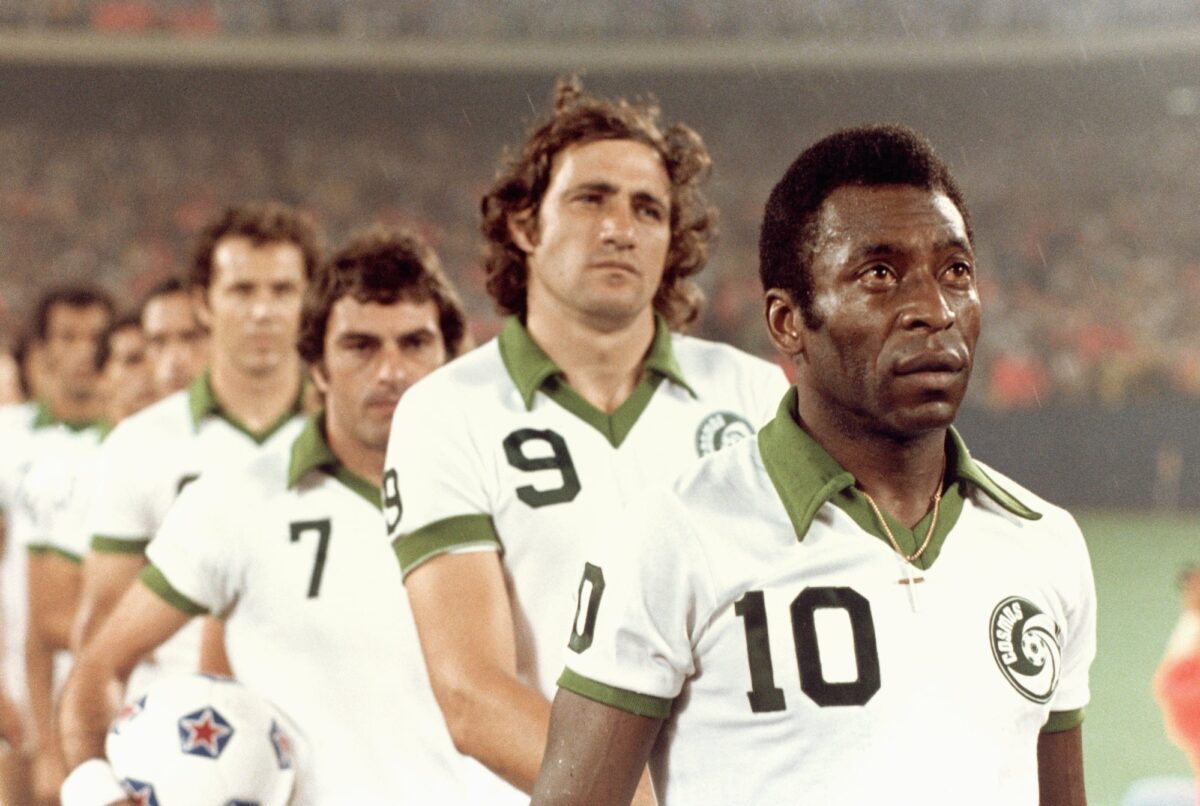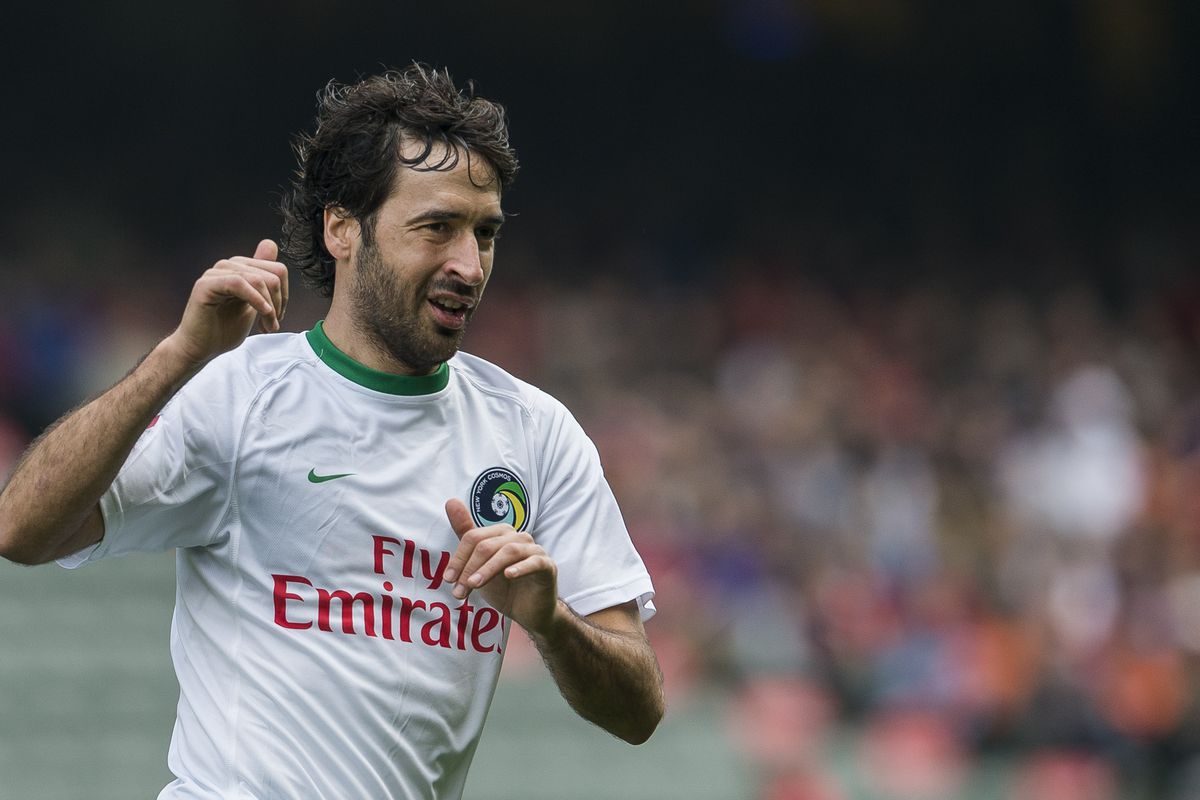Eleven years ago, the New York Cosmos returned from the ashes of the old NASL to reestablish themselves in the modern era of American Soccer. What instead happened was an ill-advised battle with Major League Soccer, poor leadership, and ultimately a hiatus. In the wrong hands, one of the most powerful brands in American Soccer history died…yet again.
The New York Cosmos will forever be the great American soccer super club that teams like the Los Angeles Galaxy, Atlanta United, and the New York/New Jersey MetroStars have tried to be. The paths may have been different, but all three of these teams at one point were chasing the Cosmos.
The New York Cosmos were born out of greatness. Unlike the stories of clubs like River Plate or AC Milan, the team was not born in some dock or social sporting union, but rather in corporate boardrooms. On paper, the Cosmos had all the tools necessary to succeed.

The original New York Cosmos were founded by none other than world renowned music executives Ahmet and Nesuhi Ertegun in 1970. In 1972, the media conglomerate Warner Communications acquired the Cosmos, mostly due to CEO Steve Ross’ ambition to own a major league sports franchise under the Warner brand. The team wasn’t anything that one could consider Major League yet, but the seeds were planted, and the right people were working to promote soccer and build the NASL as the new major sports league in the United States.
The rest is history — the Cosmos would eventually find their footing in the highly competitive New York sporting landscape when they signed Brazilian great, and at the time the world’s greatest player, Pelé in 1975. Pelé not only launched the team but also the sport in America. The Cosmos would eventually go on to play in front of crowds of up to 70,000 at the newly built Giants Stadium. Players of the caliber of Giorgio Chinaglia, Franz Beckenbauer, Carlos Alberto, Vladislav Bogićević, Ramón Mifflin, and Roberto Cabañas played for the club.
View this post on Instagram
The New York Cosmos were winners of five NASL titles in the 17-year history of the league before it all came crashing down in 1984. While the sport grew popular, the league suffered from over expansion and a lack of knowledge in properly running soccer teams. When attendance declined, many owners pulled out. Some teams didn’t last for more than two seasons. Despite the collapse of the NASL, the Cosmos were still drawing over 20,000 fans in 1983, and when it seemed that the league would fold, attendance had dropped to 12,000.
Despite all of this, the Cosmos left a heavy footprint in the New York soccer landscape for years after the club folded. When the MetroStars began play in Major League Soccer in 1996 they were almost immediately compared to the Cosmos and suffered greatly because of that comparison. Many old school NASL fans felt left out as MLS at first did not want to embrace any legacy left behind by the old NASL. Instead, the league wanted to establish itself as a totally new attempt at soccer in the United States.
Toying With a Rebirth
Eventually as MLS had its own early struggles, the new league started experimenting with “turn back the clock” nights, and some MLS teams embraced the clubs from the old NASL. The MetroStars, who by then were a dead last team and lost much of its early mojo, played a game wearing the white of the New York Cosmos. In fact, after the San Jose Clash rebranded to the San Jose Earthquakes, the league was keen to bring back the Cosmos as a way to salvage the New York team.
In 2006, the ESPN documentary Once in a Lifetime: The Extraordinary Story of the New York Cosmos recounted the history of the NASL’s flagship team and provided wild and crazy insight of trying to get soccer off the ground in the United States. The film received positive reviews and played to full theaters when screened in the New York area. The film’s cult success showed that fans still had an affection for the team despite them not playing a game in over 20 years.
Around the same time on various local sports networks, old Cosmos games were aired as a type of “vintage” sports and the chatter on internet forums like BigSoccer was that the Cosmos were making a comeback. However, that resurgence would be stalled when Red Bull purchased the MetroStars and rebranded the club in an attempt to undo the damage done by the team in its early history.
Before Red Bull bought into MLS, the league and various other would-be ownership groups in New York approached Peppe Pinton, a former Cosmos executive who bought the club’s image and name rights when it folded. Pinton was not eager to sell the naming rights to MLS or potential owners out of fear that the brand’s value would diminish in the wrong hands. Eventually, Pinton sold the rights to Paul Kemsley, a former vice-chairman of English Premier League club Tottenham Hotspur, who had the intention of bringing the Cosmos into MLS, even getting Pelé to serve as honorary president in 2010.
While the Cosmos return announcement was met with a lot of joy and interest, not much came in terms of launching a team in MLS. The Cosmos would hire big names to serve in what was thought to be key positions. Cobi Jones was hired as associate director of soccer, and Eric Cantona was hired as director of soccer in January 2011. Six months later with all these big names, fans felt the Cosmos were on their way, and everything indicated an entry into MLS was well in the cards.
One year later on August 5, 2011, the Cosmos returned — well sort of — in Paul Scholes’s testimonial match at Old Trafford. The logo was there, the team was in white, and Pelé was on the field in a pre-match ceremony, but the team that took the field was a mix of Premier League all-stars dressed as the Cosmos. It was an embarrassing 6-0 defeat to Manchester United, and it was the first sign that the Cosmos rebuild project was more of a sideshow than a legitimate approach to reviving the team.
Two months later, in a shock announcement that began to raise concern if the club would ever return, Kemsley was bought out by Sela Sport, a Saudi Arabian sports marketing company. Sela Sport had the best intentions of becoming an MLS franchise, but all of that was put to bed when new Cosmos CEO Seamus O’Brien was not inclined to pay the $100 million expansion fee to enter the league. Despite Don Garber and MLS’ eagerness to add the Cosmos, without the expansion fee any hope of getting into MLS was all but gone.
Destroying a Legacy

In 2013, the New York Cosmos finally took the field as a real team with a proper coach and a roster to call their own. They entered the newly formed NASL, the second division of American soccer. Fans were happy to see an old face in Giovanni Savarese coaching the team, and Raul of Real Madrid fame was the team’s first big star to join the club in 2014. Under Savarese, the Cosmos won three NASL titles, but behind the scenes the club was going nowhere.
After the initial buzz of the club’s return, things began to enter a free fall. Attendance diminished, an adequate stadium situation never seemed to materialize, and after Cantona sued the club for unpaid salary in 2015, fans began to see that the initial hype was all marketing. The club had no real footprint and was massively in debt.
Over the next few years, the Cosmos would jump around from minor league to minor league. While still in the NASL, the Cosmos ownership under the veil of the NASL sued MLS and the U.S. Soccer Federation, citing the two groups created a pyramid that hindered the NASL, which tried to fight to become a sort of renegade first division to compete with MLS. When the lawsuit was thrown out and with the arrival of New York City FC, the New York Cosmos’ chance of ever becoming major league again died.
When the new NASL folded, the Cosmos would not play a competitive match for two years, and by then crowds were as low as 2,000 and the club was seen as a statement of anti-MLS structure and a small group of rebellious soccer fans in favor of promotion and relegation over the MLS single entity structure.
The last known sighting of the New York Cosmos was in NISA in 2020, but due to heavy financial losses, the Cosmos could not field a team in 2021.
Unofficially the Cosmos are on life support, or in an induced coma, and the soccer world continues to go on without them. On the Cosmos official website, all you see are echoes of the past — a once proud club that captured the attention of thousands of sports fans in New York. Their latest news items can be summed up as obituaries to former players who have passed on, and their schedule tab is empty.
On social media, the Cosmos went out with a whimper, announcing on January 29 they were going on hiatus and working with NISA, a league they have only played four matches in, to build “merit-based independent soccer” — AKA being anti-MLS.
Peppe Pinton once feared that in the wrong hands the Cosmos brand would not be properly used, and his two-decade fear came true. One of the most powerful brands in American soccer history is now a distant memory. One that after its latest attempt to rise from the ashes, many fans have said “good riddance.”
The Cosmos were a dream of what American soccer could be, but as years have progressed, Atlanta United has proven that a soccer team can play in front of 70,000 fans again. Almost all MLS teams play in their own soccer-specific venues, and every team is signing top rated talent. What made the Cosmos unique is not unique anymore. Fans have moved on from the club’s nostalgia, and all that’s left is a marketing nightmare — one of a lot of noise and little substance. Ultimately forgotten.









[…] SOURCE : https://urbanpitch.com/the-death-of-a-brand-a-look-into-the-fall-of-the-new-york-cosmos/ […]
Can’t they still be revived?
They would have to sell the name to one of the NY teams and rename to the Cosmos.
The New York Cosmos will never be forgotten. Their revival was an epic failure, that’s for certain. But they will forever have a place in history as the club that first brought professional soccer, and Pelé, to the US with immense success.
You can decry the current brand ownership’s failures without diminishing the legacy of the OG team.
There will always be a hope for the NY Cosmos……the one and only real club in USA